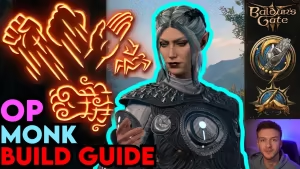Baldur's Gate 3: Companion Tier List - Narrative, Gameplay, and Writing Quality Uncovered
Highlights
- The author has created a tier list of companions from favorite RPGs by focusing on writing quality.
- The author evaluated each companion's writing quality by considering factors such as character development, dialogue, and impact on the game's narrative.
- The tier list can provide a comprehensive and nuanced view of each companion's role in the game by considering all of the factors mentioned in the article.
Creating a tier list of companions from favorite RPGs can be a daunting task, but it's a fun exercise for any fan of role-playing games. There are several ways to approach this task, but the author of this post has chosen to focus on writing quality rather than utility. This approach prioritizes the depth, complexity, and overall enjoyment of the writing for each character, rather than their gameplay mechanics or utility.

To create this tier list, the author has evaluated each companion's writing quality by considering factors such as their character development, dialogue, and overall impact on the game's narrative. By doing so, the author has been able to provide a unique perspective on the strengths and weaknesses of each companion from a narrative standpoint.
Another approach to creating a tier list of companions is to focus on the game's narrative and storytelling. This involves evaluating each companion's role in the story, their interactions with the player character, and their impact on the game's world and characters. By focusing on the narrative, this tier list can highlight the companions that make the game's story more engaging, immersive, and memorable.
A third approach is to evaluate each companion's gameplay mechanics and utility, such as their abilities, skills, and combat effectiveness. This approach involves analyzing each companion's strengths and weaknesses in combat, as well as their usefulness in puzzle-solving, exploration, and other gameplay mechanics. By prioritizing gameplay mechanics, this tier list can provide a practical guide for players looking to build the most effective team of companions.
Finally, a fourth approach is to consider a combination of all of the above factors, creating a tier list that takes into account writing quality, narrative impact, and gameplay mechanics. This approach can provide a well-rounded evaluation of each companion, considering their strengths and weaknesses from multiple angles. By considering all of these factors, the tier list can provide a comprehensive and nuanced view of each companion's role in the game.
In conclusion, creating a tier list of companions from favorite RPGs can be done in many ways, but the author of this post has chosen to focus on writing quality. By doing so, the author has been able to provide a unique perspective on the strengths and weaknesses of each companion from a narrative standpoint. Regardless of the approach taken, creating a tier list of companions can be a fun and engaging way to evaluate and compare the companions in your favorite RPGs.
Related Articles
Greatsword Showdown: Deciding the Fate of the Soulbreaker in Baldur's Gate 3
Volo's Guide to Baldur's Gate 3: Unlocking the Secrets of the Sword Coast
Edit Character Appearance Mod for Baldur's Gate 3: Tips for Customizing with Caution
Baldur's Gate 3: Unlocking the Power of Alchemy - A Guide to Mastering the Art of Potion Crafting
Steel Watch Foundry: How to Bypass and Destroy in Baldur's Gate 3




